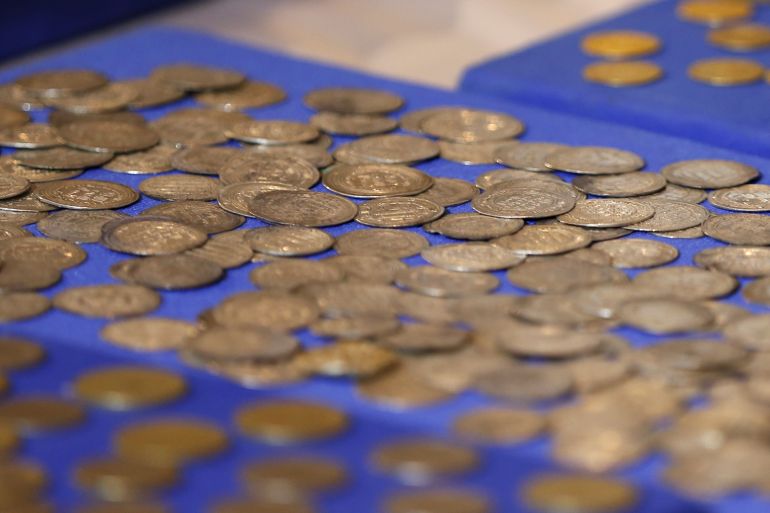How can we end antiquities trafficking?
The COVID-19 pandemic has exacerbated the theft and trafficking of antiquities and historical manuscripts, eroding our collective memory and ability to share it with future generations.

Many feel as if the COVID-19 pandemic is stealing their present and jeopardising their future. But this unprecedented global public health emergency is also precipitating the destruction of our past, one piece at a time. Indeed, the pandemic has exacerbated the theft and trafficking of antiquities and historical manuscripts, eroding our collective memory and ability to share it with future generations.
Although the theft of antiquities has been a problem since antiquity itself, its pace has increased during the pandemic, particularly in the Middle East and North Africa – areas rich in heritage sites. As many societies remain in a forced standstill because of the pandemic, looters and smugglers are reducing ancient sites to rubble. The illegal digging for antiquities in Egypt alone more than doubled in 2020.
Keep reading
list of 4 itemsRwanda genocide: ‘Frozen faces still haunt’ photojournalist, 30 years on
Underground tunnels found in Israel from Jewish revolt against Romans
Lost in Orientalism: Arab Christians and the war in Gaza
It is difficult to estimate the exact size and monetary value of the illicit antiquities market. According to Roger Atwood’s 2020 book Stealing History, it could be worth anywhere between $300m to $6bn a year. UNESCO reports that the illicit trade in cultural goods – of which antiquities trafficking is a part – is worth $10bn a year. A portion of these profits is known to be used to finance conflicts and global terrorism.
Between 2010 and 2014, there was a substantial increase in the trade of illegal antiquities from the Levant, in large part due to ongoing conflicts. According to the Antiquities Trafficking and Heritage Anthropology Research (ATHAR) Project, which investigates and documents the digital underworld of trafficking in looted artefacts, the pace of such activities in the Middle East and North Africa has accelerated further during the pandemic.
This uptick in antiquities theft and smuggling was caused by several interconnected reasons. First, antiquities trafficking provides a much-needed revenue stream for those who have lost their jobs during the pandemic. Second, due to COVID-19 lockdowns and budgetary restrictions, authorities loosened the monitoring of archaeological sites and museums, leaving them more vulnerable to theft and looting. Third, many traffickers managed to leverage the rise of the digital economy during the pandemic. Indeed, the online illicit trade in looted antiquities spiked after the pandemic hit. Today, these items are not only widely being sold on the dark web, but also on popular social media platforms.
The trafficking of antiquities is not the exclusive realm of terror groups and organised crime networks. Witting and unwitting collectors and auction houses, impoverished local populations and tourists also contribute to this theft. As such, all of us, civil society, businesses, governments, and international organisations must mobilise to protect our past.
The antiquities market is driven by supply and demand. Antiquities are sold in both legal and illegal markets. There are also grey markets, where antiquities of unknown origin or those whose documentation has been lost are being sold. It is not always easy to distinguish between these markets, but that is what must be done to protect our past.
There are practical steps that we can take in the short term, such as training border officials to help them differentiate between original and fake pieces, electronically tagging all antiquities, promoting more transparent auctions, and imposing severer penalties for traffickers.
There have long been calls for a global policy to counter antiquities trafficking.
However, existing frameworks lack enforcement mechanisms and do not account for technological developments like digital commerce. Therefore, we must develop enforceable agreements that are in line with the realities of the 21st century. Since antiquities trafficking has moved online, we must work with digital marketplaces, social media platforms, and payment processing companies. Concluding a binding agreement based on UNESCO’s basic actions to counter the illicit sale of cultural objects online is a good place to start.
Education is also a key tool in the fight against antiquities trafficking because too many groups remain unaware of the challenge and its implications. Debate is necessary because not all involved agree on the way forward. It is through initiatives like the Himaya Project – led by Qatar National Library in association with UNESCO, Interpol and the World Customs Organisation – that we can counter the trafficking of antiquities and manuscripts. Such projects and initiatives can help us raise awareness, help others realise the significance of heritage items, cultivate public debates around their preservation, and decide how to better protect them.
Controlling the trafficking of heritage material across the Middle East and North Africa is a herculean task, but it is possible if we come together. National libraries, museums, international organisations, and civil society groups must continue working together to raise awareness and promote binding rules that address this grave threat to the historical rights of nations and peoples.
In 2015, then-United States Deputy Secretary of State Antony Blinken said “each ancient artefact, rich in memory, rich in meaning, conjures a story that we can ill afford to lose”. His words were right then and are still right today. We cannot ignore the trafficking of cultural antiquities and manuscripts. In losing them we lose part of our collective past forever. Who will set history free if it is stolen?
The views expressed in this article are the author’s own and do not necessarily reflect Al Jazeera’s editorial stance.
